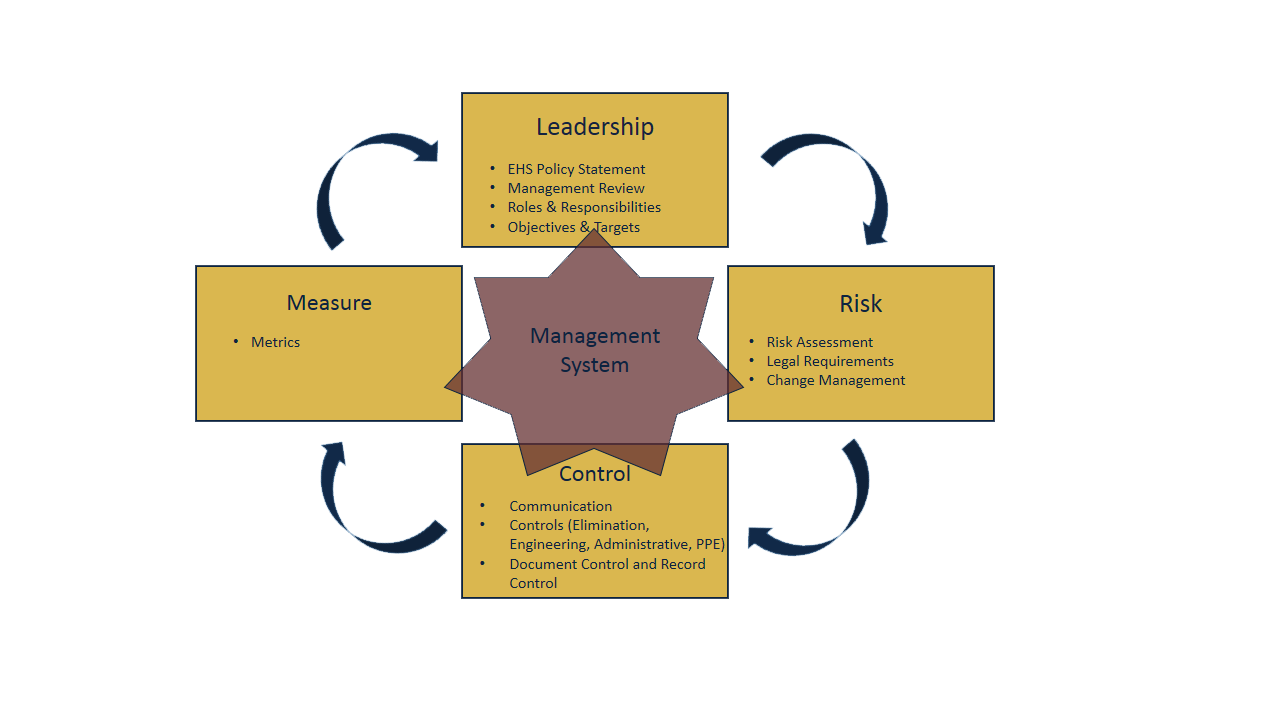Our Safety Management Structure
Environmental Health and Safety encompasses the laws, rules, guidance and processes designed to help protect employees, the public and the environment from harm. The programs and services of Risk Management and Safety combine the technical disciplines of environmental health and safety with risk control and risk transfer. The University is a significant teaching, research, and public service enterprise with the potential for a wide variety of inherent hazards and loss exposure that must be combated.
Environment
This area bolsters a systematic approach to complying with environmental regulations, such as managing waste or air emissions. It includes complete hazardous waste services for all generators on campus and consulting services to other departments on campus subject to environmental regulations.
Health & Safety
Health & Safety coordinates organized efforts and procedures to identify workplace hazards and reduce accidents and exposure to harmful situations and substances. It also encompasses training of personnel in accident prevention, accident response, and use of protective clothing and equipment. This includes annual inspections of teaching and research laboratories, machine shops, athletic fields, fitness centers and weight rooms, playgrounds, and food sales operations, as well as plan-reviews, safety consults on new construction and renovations, and safety training.

*Employee Involvement is Key to the Management System Process
| Leadership | ||
|---|---|---|
| EHS Policy Statement | Overarching EHS commitment statement from the University's leadership | This provides visibility to all faculty, staff and students to the commitment from leadership for EHS. |
| Roles & Responsibilities | High level document describing health, safety, and environmental (EHS) roles and responsibility. | This provides a clear description of who is responsible for specific EHS duties. |
| Objectives & Targets | Establish annual goals endorsed by University leadership for the EHS program. | Requiring goals for all areas and holding reports accountable to those goals helps leadership drive the EHS culture. |
| Management Review | A review of the EHS program and status of objectives and targets should be provided to University leadership annually. | This provides current state view of the EHS programs to University leadership and proposed actions to meet objectives. Helps leadership identify EHS goals. |
| Risk | ||
|---|---|---|
| Risk Assessment | Develop a risk assessment process that identifies and ranks EHS risks. | Understanding risk and prioritizing assists in the development of proper controls. |
| Legal Requirements | Identifies what EHS regulations apply. | Understanding what regulatory requirements are applicable helps drive the development of controls ensuring regulatory compliance. |
| Change Management | Identifies and controls changes that could affect EHS requirements, regulations, or add risk. Process should evaluate change, require change initiator to conduct risk assessment and implement controls. Approval process to implement a change is necessary. | A change management process reduces regulatory and EHS risks. |
| Control | ||
|---|---|---|
| Communication | An EHS communication process outlines the methods used to communicate requirements, changes, etc., to affected personnel and stakeholders. | A well-defined and executed communication process raises awareness and establishes the foundation for a strong EHS culture. |
| Controls (Elimination, Engineering, Administrative, PPE) | Identifying and implementing proper controls reduces the risk of an incident and enables regulatory compliance. | Controlling risk is necessary to prevent illness and injuries and to stay compliant with regulations. |
| Document Control and Record Control | This process identifies a standard method for controlling EHS documents and maintaining records. | Standardizing documents provides a process for ensuring the latest documents are being used, documents are being reviewed periodically, and new documents are properly approved. A record retention process is critical to retrieving records, e.g., training, audits, etc., in a timely manner and purging them according to University policy. |
| Measure | ||
|---|---|---|
| Metrics | Create a set of metrics to drive improvements and focus people and resources on what is important. | Reporting metrics is necessary to show progress toward goals. Metrics show where you have been, where you are heading, whether things go wrong and when you reach your goal. |
**Components of these management systems are currently being created, updated and changed.